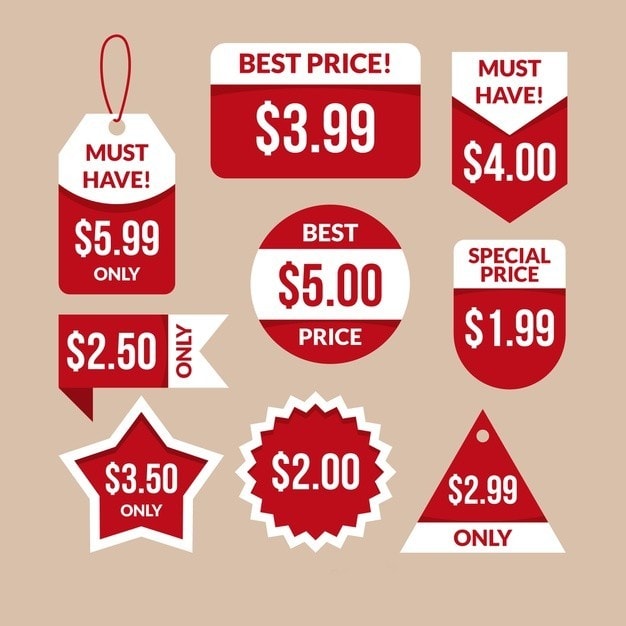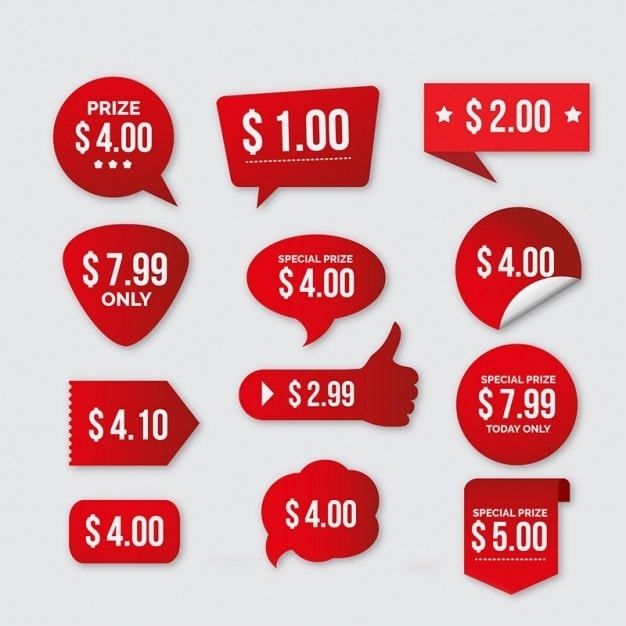Pricing of a product plays an essential role in deciding the value of a product in the market. Companies use different pricing strategies to introduce a product in the market depending on various factors like the target audience of the product, income level of the target audience, demographics, image of the product and company in the market.
Sometimes companies decide the price of the products too low to create their place in the market, and sometimes companies use a premium pricing strategy to establish a luxury image of the product.
x
In this article, you will learn about what is premium pricing, the definition of premium pricing, advantages and disadvantages of premium pricing, and examples of premium pricing.
Table of Contents
What is Premium Pricing?
Premium pricing strategy is also known as image pricing or prestige pricing strategy. The premium pricing means setting the price of products high. The premium pricing strategy creates an approving perception among buyers because buyers believe that the higher the price of goods better will be its quality.
This strategy is used by companies to charge higher prices as compared to the price of their competitors’ products. Companies make use of their brand name, an image in the market to charge higher prices for the same products. This strategy is also referred to as a skim pricing strategy. Because using this strategy, a company tries to skim the cream of the market.
That means they are targeting the affluent people who can afford the high prices. The companies try to maximize their profits by selling to customers who don’t pay twice higher prices, or when companies can’t reduce the production cost by adopting mass production. The premium pricing strategy also works the products of those companies which don’t have substitutes in the market. Customers will buy their products at any price that they will charge.
While setting the premium pricing, the seller assumes that the customers will not investigate to determine whether the quality of the product is high to justify its price. They believe that the name of the brand will be sufficient to convince the audience to pay high costs for their products.
The premium pricing strategy is often used in apparel, footwear, perfume, and cosmetic industries. For example, an Armani jacket will cost you $300, and a similar coat can be bought from a local market at $ 50 – $ 60. The company is charging a high price because of the association of the name of the brand with it.
However, Nowadays, consumers are becoming smart. Therefore, companies are required to make use of this strategy with care so that they don’t have to face problems in the future.
Definition Premium Pricing
The premium pricing can be defined as a pricing strategy to price products in such a way to present it as a premium product. Usually, the price of products is kept high as compared to similar products available in the market to create an exclusive image of the product.
Advantages of premium pricing Strategy
Premium pricing used under the right circumstances and proper planning can be very beneficial for a company. The company will not be required to compete with similar brands available in the market and can prove its competitive edge over them, merely using premium pricing.
However, there are several other benefits of using premium pricing. Let us learn about them in this article.
1. Increased Profits
The first advantage of using premium pricing is increased profits. A company that sells products at discounted prices or lower prices can make the same profit by selling ten units of products that you can generate just by selling one unit of your product.
However, a company that uses premium pricing is required to invest more in marketing and advertising. Therefore, make sure to include the expenses of marketing into the price of products so that you don’t lose your profit.
2. Competitive edge
By adopting premium pricing, a company gets a competitive advantage over its competitors. Because most consumers evaluate the quality of a product based on its price. They believe that the higher the price of a product better will be its quality. Your product is perceived as a prestigious product just because of its price and by the use of the right marketing strategy.
For example, Initially, Apple’s iPhone has features that make its high price worth, but in the present times, almost all smartphones contain similar elements. But Apple is enjoying a competitive edge over its rival by making use of premium pricing.
3. Increased brand awareness
Premium pricing helps you in increasing awareness about your brand. Premium pricing makes your products prestigious in the eyes of your consumers. They think highly of it as they believe the higher the price of a product better will be its quality.
There will be more talk about your brand and product. Take, for example, people share on their social media when they buy an expensive pair of shoes or mobile phones, which is in the case of the same products of lower quality. In this way, they unintentionally promote your product and brand to their friends and family, which brings you more customers despite the high price of your products.
Disadvantages of Premium Pricing Strategy
1. Premium Pricings does not work for all products and services
Not every company can use premium pricing to increase its sales as it cannot be applied for the purchase of all types of products and services. The premium pricing works better for products like bags, shoes, apparel, mobile phones, watches, and cars, etc. But your customers will never be ready to pay high prices for the goods that they use daily.
For example, people will not like to pay a premium price for a bottle of water. However, the right marketing can do wonders. Many companies are selling conventional products like shampoos and rice at premium prices by making people believe that these products are better in quality than the products sold at lower prices.
Therefore, if you are planning to adopt premium pricing for your products, then invest good money in preparing your marketing strategy to promote your products.
2. The high cost of marketing:
Another disadvantage of premium pricing is the high cost of marketing. A company that sells its products at premium prices is required to invest high in marketing to create awareness about the product. Marketing can help you to create a positive image of your company in the market. People will buy your products only if they have heard of your brand.
Moreover, companies are required to pay more for research to adopt premium pricing. They are required to learn about the preferences of people and the people that they want to target using a premium pricing strategy. All of this causes enormous expenses. If these costs are not included in the price of products, then the company is required to bear this cost.
In addition to this, understand your market and understand the people you are targeting to understand whether there is a need for a luxury product or not. If there is no need for a luxury product, then you will be wasting your money, and it will put a negative impression on the quality of your product if you later sell it at a lower price.
3. Premium pricings stays with the product for its entire life
It is not right to price your product at higher prices and later reduce the price if the product does not gain sales as anticipated. If you lower the price of your product, then your customers will feel cheated, and they think that you deceived them, believing that your product was of premium quality.
4. Rivalry
Your rivals can be a problem for you if you are selling your products at premium prices. They can harm the sales of your products by introducing alternatives.
Moreover, they can also spread rumors about your products, which can affect the image of your product. Therefore, the premium pricing strategy is not a good pricing strategy for companies with many competitors.
5. Limited customer base
By setting the premium pricing of your products, you are limiting your customer base. That means affluent customers can only afford your products. People with lower incomes will hesitate to buy your products.
Therefore, you will be excluding a large number of customers who prefer to purchase products at an average price. If you are selecting a premium pricing strategy, then you are required to focus your marketing methods on top-tier customers to make them aware of the presence of your product.
Examples of Premium Pricing
1. Designer clothes
Premium pricing is prevalent in the apparel industry. Designers sell their clothes at high prices. High prices will give an impression of better quality, and people will feel that they have owned something which everyone can’t afford.
Ordinary people cannot afford these designer clothes because of their high prices. The same is true in the case of shoes and handbags’ brands. Therefore, there are many small level apparel businesses that sell a copy of the designer products at much lower prices for people with low income.
2. Apple
A famous example of a company that uses premium pricing is Apple. It uses a premium pricing strategy to establish its supremacy in the market. The products of Apple has a prestigious position in the market.
People consider Apple’s products as a status symbol. Because of this reason, you will always see maximum celebrities and rich people using iPhones. The other reason for this is that they can afford to buy Apple’s products.
How to formulate your premium pricing strategy?
Companies which use premium pricing strategy end up struggling in the market rather than enjoying the benefits of premium pricing, if they don’t plan their strategy correctly and don’t position their product in the market rightly.
In this article, you will learn how you can create a premium pricing strategy for your product.
1. Create a product with premium value
The first step in adopting a premium pricing strategy is to have a premium quality product. Do the research and learn about the requirement of customers. Identify whether there is a need for luxury products in the market or not. Then once you have all of this information, create your product and place it in the market.
2. Define the value of your product
This step is significant in the success of your premium pricing strategy. Market the qualities and value of your product and make your target audience aware of your product.
3. Put extra effort
A luxury brand is required to provide luxury services to give a royal feeling to its customers. Therefore, take the extra mile to serve your customers so that they feel that your product was worth the high price.
4. Don’t lower the value of your product
This can also be termed as a disadvantage of using a premium product strategy. Never lower the price of your product even when you are facing low sales. Lowering the cost of your product will put a negative impression on your existing customers and reduces the brand value of your product.
5. Don’t play discount games
Discount games are for cheap brands. Luxury things don’t come at discounted prices.
Therefore, never use the premium discount strategy to enhance your business.
Liked this post? Check out the complete series on Pricing

